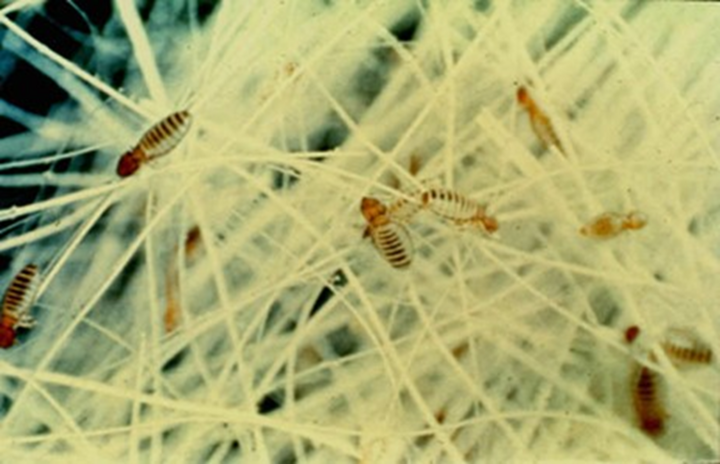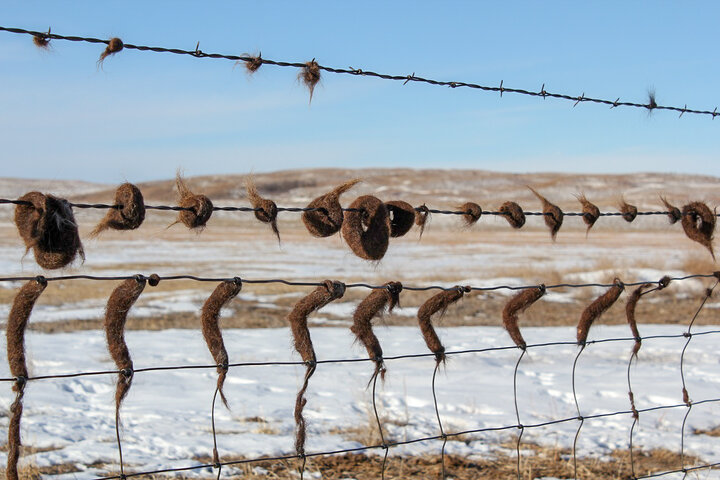Treating cattle for lice when it’s convenient—usually during preconditioning and preg-checking—isn’t necessarily the most effective approach.
While late summer and early fall endectocide (drugs that kill both internal and external parasitic insects) treatment may work on most internal parasites and horn flies, lice may escape.
Nebraska cattle are usually infested with more than one species of lice, and calves, yearlings and older poor-conditioned cattle usually have the heaviest lice infestations. Heavy louse populations can lower milk production, stunt growth, cause hair loss, an unthrifty appearance and anemia.
University of Nebraska and other studies indicate heavy lice populations (more than 10 lice/inch2) may reduce calf weight gains by as much as 0.21 lb/day. These studies also indicate calves fed at a higher nutrition level had lower lice populations and were affected less severely by lice than calves fed a maintenance ration.
Timing of Cattle Lice Control
Cattle lice are cold-weather insects, thriving during wintery conditions. During summer months cattle lice undergo a period of dormancy called estivation, when their reproduction is reduced significantly. Temperatures above 78° F in September, October and November will suppress louse development, because the cattle skin temperature will exceed 100° F.
If endectocide treatments are applied too early during a warm extended fall, like in 2021 and 2022, lice will develop slowly and can largely escape the endectocide treatment.
Later, when cold weather does set in, lice outbreaks can occur if the endectocide has broken down. Livestock producers who use a fall treatment strategy should monitor their cattle for signs of lice, especially during December, January, and February, and consider re-treating. However, using the wrong products at the time can do more harm than good.
Cattle Lice Treatment Options
Cattle lice treatment products fall into several categories: animal sprays, non-systemic (contact) pour-on, and endectocides (systemic pour-on, absorbed internally and systemic injectable). Some non-systemic pour-ons require just one application and some require two applications spaced 14 days apart. Systemic injectables work better on the three species of sucking lice than on the little red chewing louse. A systemic pour-on can effectively kill both chewing and sucking lice.
Using systemic control products between Nov. 1 and Feb. 1 is not advised as they may cause a host-parasite reaction from killing developing cattle grubs while they are in the esophagus or spinal canal of the animal. A systemic product used during fall weaning will not be a problem, and if a systemic product was used in the fall, a follow-up from November to February shouldn’t cause those issues, if it’s necessary.
Producers who did not use a systemic control product during fall weaning should consider using only non-systemic control products during this November to February time frame. If replacement animals are brought into a herd during the winter months they should be examined for lice. If present, the animals should be isolated and treated before introduction into the existing herd.
Insecticide treatments, regardless of application method, should be rotated through insecticide Mode of Action groups (MoA) as outlined by the Insecticide Resistance Action Committee, to reduce the likelihood of developing resistance. The IRAC website* offers an app to download or a web-based database that outlines which insecticides are in which groups. Since there are 36 different groups, it’s best to check the classifications prior to investing in an insecticide strategy.
Continual use of products from a single numbered group against a pest species can lead to reduced control (resistance to all products in the group). The recommended management practice to manage resistance is to alternate insecticide classes, and that applies to animal sprays, dusts, non-systemic pour-ons, and endectocides (injectable and pour-on formulations).
To reduce control failures due to insecticide resistance, do not apply pesticides within the same group number repeatedly, and always follow label directions. Insecticides and endectocides are an investment of time, money and cattle stress, and there are real costs to insect infestations. Putting a few extra minutes into correctly applying these tools can make all the difference between an effective and ineffective insect control program.
When applying any insecticide control product, please read and follow label directions.
*To find the IRAC MOA groups visit their website at https://irac-online.org/mode-of-action/ and download their app.
For current control recommendations, please access the following website, www.veterinaryentomology.org
Nebraska Cattle Lice Species
In Nebraska we can encounter four different cattle lice species. The biting or chewing louse (little red) Bovicola (Damalinia) bovis, is reddish brown in color with dark bands running transversally across the body (Figure 1). Typically, the chewing louse feeds on hair, skin, skin exudates and debris near the skin surface. This species is initially found on the shoulder, top line, and back, but as populations increase, can be found on the sides and sometimes over the whole animal.

The other three species are sucking lice, which feed on blood, and can cause irritation, anemia, impact weight gain, and even death in extreme cases.
The short-nose cattle louse, Haematopinus eurysternus, is the largest louse (Figure 2) at 3-5 mm in length and is typically found on older animals but can be found on any age or breed of cattle. This species can usually be found in the neck region, dewlap, back, and base of tail.

The long-nose cattle louse, Linognathus vituli, is about 2.5 mm in length, bluish in color (Figure 3) and differs from other louse species by its long slender head. This louse can be found on the dewlap, shoulders, sides of neck and rump, but when numbers are high, they can be found over the entire body.

The little blue cattle louse, Solenopotes capillatus (Figure 4) is about 1-2 mm in length, bluish in color, and smallest of the sucking lice species (Figure 4). It often can be found in dense patches on the dewlap, muzzle, around eyes, and neck. Heavy populations can greatly impact cattle weight gains.

Interviews with the authors of BeefWatch newsletter articles become available throughout the month of publication and are accessible at https://go.unl.edu/podcast. You can subscribe to the BeefWatch newsletter here: http://go.unl.edu/Beefwatch_subscribe.

